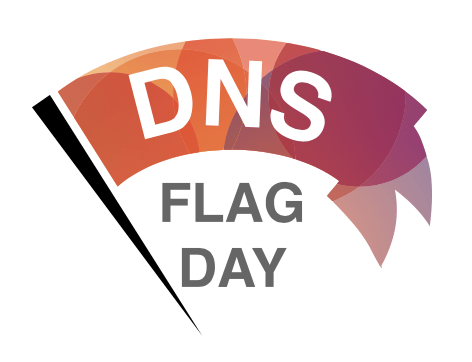T-Mobile Keeps Its Low-Band Spectrum Powder Dry for 5G
 Company CTO Neville Ray explained that the carrier was using just 10 megahertz of its 600 MHz and...
Company CTO Neville Ray explained that the carrier was using just 10 megahertz of its 600 MHz and...
Merchant Silicon Will Dominate Data Center Ethernet Switching by 2022, IHS Markit Says
![]() Vendors including Cisco, Juniper, and Arista all recently introduced merchant silicon chips into...
Vendors including Cisco, Juniper, and Arista all recently introduced merchant silicon chips into...
Last Month in Internet Intelligence: January 2019

This post is presented in conjunction with The Internet Society.
During the second half of 2018, the causes of significant Internet disruptions observed through the Oracle Internet Intelligence Map could be clustered into a few overarching areas: government-directed, cable problems, power outages, distributed denial of service (DDoS) attacks, and general technical issues. Little changed heading into 2019, with two new government-directed Internet disruptions observed in Africa, alongside disruptions caused by fiber cuts and other network issues that impacted a number of countries around the world.
Government Directed
Initially covered in last month’s overview, the Internet disruption in the Democratic Republic of Congo continued into January, lasting through the third week of the month. Government authorities reportedly cut off Internet access in the country in December to prevent “rumor mongering” in the run-up to presidential elections.
An attempted military coup in Gabon led to a day-long Internet disruption in the country. The disruption started just after 07:00 UTC on January 7, as seen in the figure below, which shows clear declines in the Traceroute Completion Ratio and BGP Routes metrics, as well as a disruption to the usual diurnal pattern seen in the DNS Query Rate metric. Although the coup Continue reading
Security Unicorn Illumio Raises $65M, Hires a New CFO
 The investment is further validation that microsegmentation is real, and Illumio CEO Andrew Rubin...
The investment is further validation that microsegmentation is real, and Illumio CEO Andrew Rubin...
SDxCentral’s Weekly Roundup — February 8, 2019
 Vodafone Germany swaps out Huawei for Nokia in its core network; Sprint sues AT&T for 'fake...
Vodafone Germany swaps out Huawei for Nokia in its core network; Sprint sues AT&T for 'fake...
Cisco and 29 Partners Launch ‘Huge’ Rural 5G Trial in British Isles
 The trial is part of Cisco’s 5G RuralFirst initiative to contribute to the business case for...
The trial is part of Cisco’s 5G RuralFirst initiative to contribute to the business case for...
Heavy Networking 429: Network Modeling And New Features In Forward Networks (Sponsored)
Forward Networks returns to Heavy Networking to discuss its approach to network modeling, verification, and assurance in this sponsored episode. We explore new features, including the ability to leverage Forward's data model for other applications and management systems, and its support for NSX-V and AWS VPCs.
The post Heavy Networking 429: Network Modeling And New Features In Forward Networks (Sponsored) appeared first on Packet Pushers.
Why Doesn’t Cisco Sell Network Adapters When It Makes Them ?

True end-to-end networking starts in the network adapter
The post Why Doesn’t Cisco Sell Network Adapters When It Makes Them ? appeared first on EtherealMind.
Short Take – Cache Covert Channel
The spectre and meltdown vulnerabilities took advantage of deficiencies in processor caching mechanisms. In this Network Collective Short Take, Russ White talks through how these attacks work and what further implications there may be in speculative processor cacheing.
The post Short Take – Cache Covert Channel appeared first on Network Collective.
BiB 069: Plixer’s FlowPro Shines A Light On Network Darkness
Plixer has announced the FlowPro network probe to shine some light on sections of the network with limited flow export capability. Available both as hardware and virtual appliances, FlowPro observes network packets via SPAN or ERSPAN and can, based on its observations, create and export flow records to Scrutinizer. But that’s not all that FlowPro can do. There’s a bunch of analytical capability baked into the tool with both APM and security use cases.
The post BiB 069: Plixer’s FlowPro Shines A Light On Network Darkness appeared first on Packet Pushers.
DNS Flag Day

The 1st of February was DNS Flag Day, which is an initiative of several DNS vendors and operators to address the problems of DNS name server implementations that are not in compliance with long-established DNS standards. This is causing the DNS to not only be unnecessarily slow and inefficient, but prevent operators from deploying new functionality including mechanisms to protect against DDoS attacks.
DNSSEC and other extended features of the DNS require EDNS0 (Extension Mechanisms for DNS – RFC 6891), and properly implemented name servers should either reply with an EDNS0 compliant response, or provide a regular DNS response if they don’t understand.
However, a lot of name server software is not implemented properly which has meant resolvers have had to incorporate workarounds when name servers don’t respond correctly. These cause unnecessary retries, delays, and prevent the newer features of the DNS being used.
As a result, the vendors of the most commonly used DNS software (BIND, Ubound, PowerDNS and Knot) will no longer be supporting these workarounds in new versions of their software, whilst a number of public DNS resolver operators (CleanBrowsing, Cloudflare, Google and Quad9) will no longer resolve hostnames served by broken name server implementations.
This may mean Continue reading





